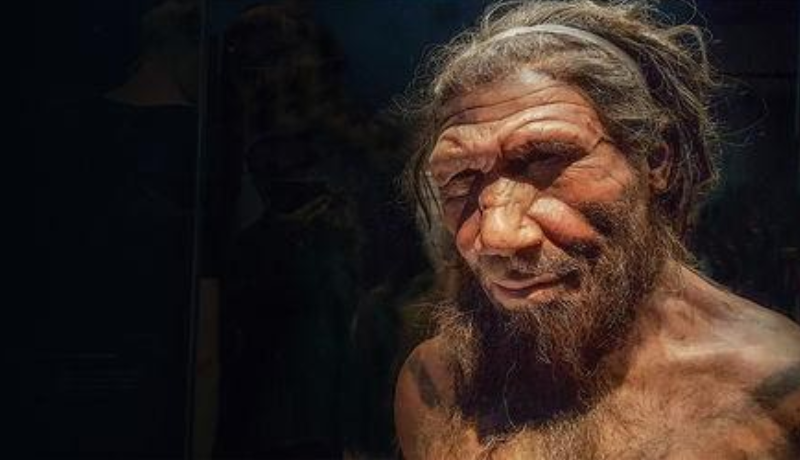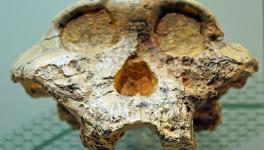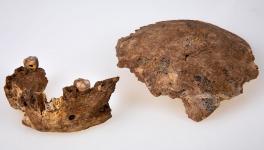Genetic Ancestry of Pain Sensitivity Traced Back to Neanderthals

Image Courtesy: Science Magazine.
Neanderthals, the ancient relatives of modern humans may have gone extinct some 40,000 years back, but their presence can be felt even today, not just as the remnants of cave fossils, but also in our genes. Tracing our genetic ancestry in archaic humans is an ever-growing field of research that has revealed several hitherto unbelievable linkages with Neanderthals.
In a recent research paper published in Current Biology, Svante Paabo of Max Planck Institute of Evolutionary Anthropology, Leipzig, Germany, and his colleagues from different countries, in a genome study reported that Neanderthals had biological predisposition of increased pain sensation. This is, according to them, due to three mutations in a gene carried by the ancient humans. More than this, they have also showed that the three Neanderthal versions of the gene are also found in 0.4% of today’s Britons and is associated with a heightened sensitivity of pain. This is considered to be a first-of-its-kind study of genome of the ancient humans.
Svante Paabo, the corresponding author of the paper and the lead scientist of the research was quoted to have said, “It’s a first example, to me, about how we begin to perhaps get an idea about Neanderthal physiology by using present-day people as transgenic models.”
The mutated gene of interest is known as SCN9A, which encodes the NaV1.7 protein or commonly known as the sodium channel. This protein belongs to a special kind of proteins called the ion channels with their primary task to allow the passage of ions or to stop the passage. The sodium channel is the ion channel that functions with respect to change in the voltage that exists in the membrane of the cell. At a particular voltage, a sodium channel opens up and with its opening sodium ions can pass through it. Without the critical voltage being attained, the sodium channels would not open and as a result, there is no passage of the sodium ions through it.
Sodium channels are essentials in any kind of brain functioning which needs electric current flow of very low intensity and the current flows in the form of ion passages. Sensation of any kind is directly related to brain activities, and NaV1.7 in this respect plays the most crucial role in the spinal cord and also in the brain. In short, the process of pain sensation starts with sending electrical signals from the location of the body where the sensation is to felt through nerves to the brain. Reaching upon the brain the electrical signal is processed and we feel the sensation. In every step here, sodium channels’ functioning is a must.
The researchers found that the Neanderthals had three mutations in the SCN9A gene encoding the sodium channel. These mutations altered the shape of the protein. Moreover, the mutated forms are found on both sets of the chromosomes in all the Neanderthal genomes that Paabo’s team analysed. This is a clear indication that the ancient human population had the mutated version of the gene across their population.
To see how could these mutations have played a role in perceiving the sensation of pain, the team expressed the Neanderthal version of the gene in frog eggs and human kidney cells. The choice of these cells to express the Neanderthal version of the channel protein pertains to the fact that these systems are useful in characterising proteins required for controlling neural impulses. In cells with all the three mutations, the protein was found to be more active than the cells without the mutations. When it comes to nerves, these mutations would lower the threshold for pain sensation, meaning increasing the pain sensitivity.
It needs to be mentioned here that Neanderthal genomes are not found in abundance and whatever has been obtained from fossils, researchers could sequence them in low resolution. This makes things harder when it comes to deciphering mutations that evolved after the Neanderthal lineage split from humans some 5 to 7.5 lakh years back. But, in the recent few years, Paabo and his team could generate three Neanderthal genomes with the help of DNA extracted from cave fossils in Croatia and Russia. This helped them in identifying mutations that were common in Neanderthals, but are very rare in humans.
In the next step, Paabo’s team explored how modern humans inherit the Neanderthal version of the sodium channels in focus and how it is related to more pain sensitivity. For that, the team concentrated on modern Britons and the best way was to explore the UK Biobank, a genome database containing genetic information of about half a million British people. They found that almost 0.4% of modern Britons have the Neanderthal version of the sodium channel. However, unlike Neanderthals, no one had two genes encoding the protein. Interestingly, the people with the Neanderthal version of the gene were reported to have 7% more pain sensation than those without the mutations.
Modern humans carry genes from Neanderthal and also Denisovans, both archaic humans. This carriage of genetic ancestry was possible by the trysts modern humans made with the archaic ones. Importantly, these ancient genetic ancestries have rendered the modern humans with much benefits to have an evolutionary edge in surviving in the current atmosphere.
Get the latest reports & analysis with people's perspective on Protests, movements & deep analytical videos, discussions of the current affairs in your Telegram app. Subscribe to NewsClick's Telegram channel & get Real-Time updates on stories, as they get published on our website.





















